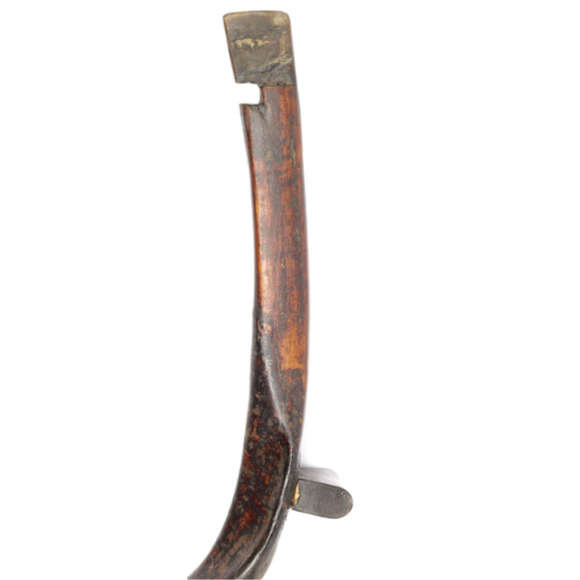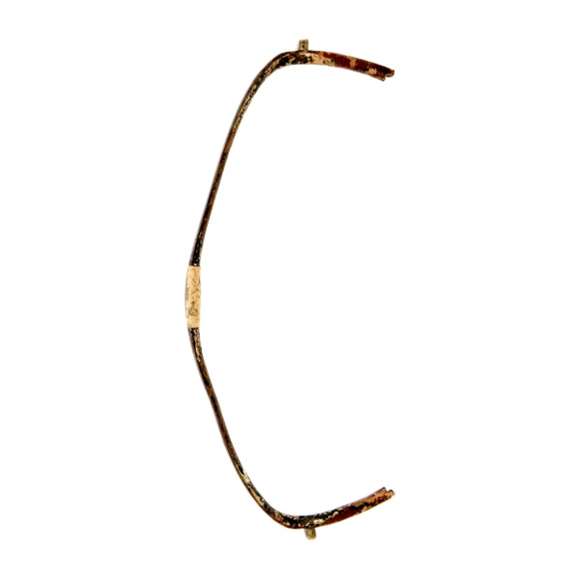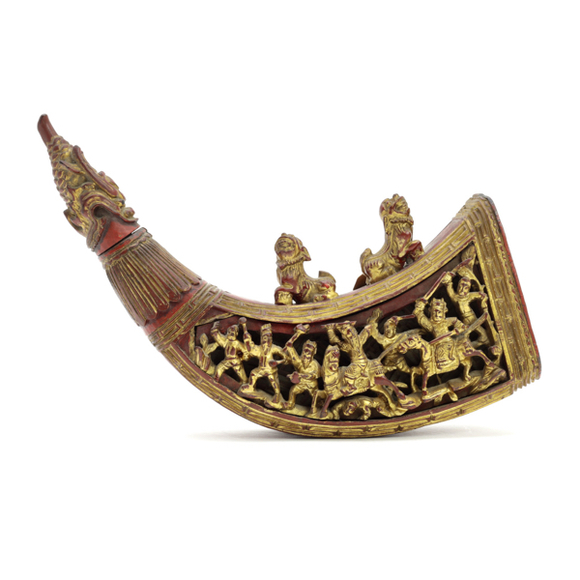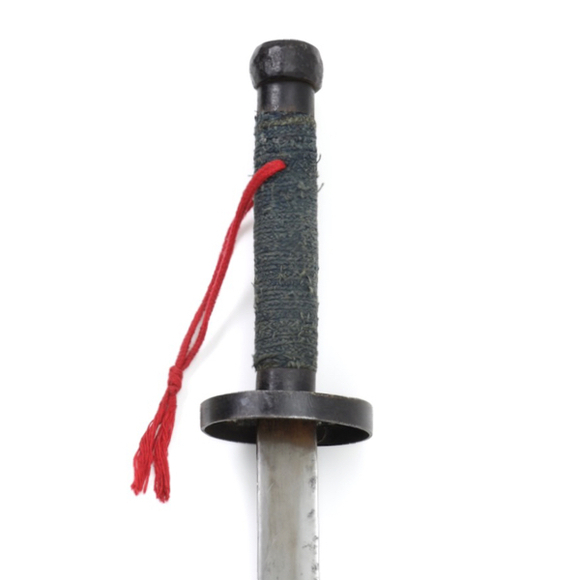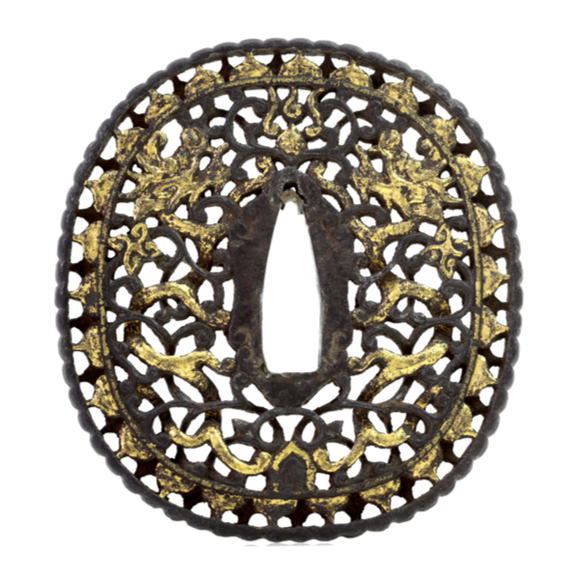Language: Mandarin Chinese
Source: Classical literature
Description
Wǔkē gōng (武科弓) literally "Martial test bow", was a type of heavy bow that was used in the Qing dynasty to build up and to test the archer's strength. In order to pass the military exam, for example, soldiers were required to pull the 160-pound bow.1

Above is a page from the 1766 Huangchao Liqi Tushi. My translation:
"Martial Test Bow.
According to the regulations of our present dynasty, Martial Arts Bow:
The deerskin string measures 3 chi 7 cun. (Approx 130 cm)
Divided into three grades: Grade 1, 12 li. Then 10 li. Then 8 li."
(Approx 160, 133 and 107 pounds)
"In order to test one’s strength, there are six strong bows one can pull: 13 li to 18 li." 2
(Approx 173# to 240#)
To get an idea of how common these weights were in use, we can catch a glimpse of the military examinations from a published page of results of examination results in Jiangnan, 1882. Of the 8 listed contestants, 3 pulled the 173-pound bow and 5 pulled the 160-pound bow. 3

Pulling the heavy strength bow.
From Etienne Zie; Pratique des examens militaires en Chine. 1896.
Even during the Boxer Uprising of 1900, well into the age of firearms, the Qing soldiers upheld heavy bow archery:
“The Chinese bows are large and powerful... Bows of 150 pounds are by no means rare in China. The arrows used at the siege of the Legations in 1900 are 3 feet 5.5 inches long and 7/16 inch in diameter with heavy socketed steel heads. Some of the whistling arrows are 4 feet 2 inches long with heads four inches in diameter and six inches long. The bows that I saw in Peking that were used with such arrows were huge, about six feet long strung, with a cross section at the handle of nearly two square inches. They were said to pave a pull of about 200 pounds and looked it." 4
-George Cameron Stone, 1934
Civilian use
Civilian martial artists and strongmen also used heavy bows for training and in public displays.


Above: two photos by Hedda Morisson, taken in the 1930s. The puller seems part of a demonstration that goes with a tradesperson: Judging from the sign, they seem to be promoting a medicinal herb called 牛荗 or "oxen herb" from their company Sheng Tang, or "Hall of Life". The man was probably hired to demonstrate the oxen-like strength the medicine was supposed to give the user.
This may seem a little far-fetched, but already in 1724 the Yongzheng emperor warned about the use of medicine in strength training:
“If there are those who wish to learn how to use a hard bow, they should practice naturally, gradually increasing the strength of the bow. How can one go to such extremes as to take medicine? Unless one knows the nature of the drug there is the chance that people will be hurt. Besides, using a hard bow on horseback is difficult, so what is the advantage? A bow that is of strength six [80 pounds] or greater is enough.” 5
Those who were eager to master the use of hard bows were in the emperor's view all "ambitious" (心上进之人), and for that reason the greater the pity that they were wrongly harming themselves.
The Yongzheng Emperor, 1724
Constructing the heavy bow
The Gōngbù jūnqì zélì (工部軍器則理) or "Regulations and Precedents on Military Equipment for the Board of Works" describes in detail the materials needed for making the different types of bows. These regulations covered the manufacture for all military equipment of the state-equipped armies.
My translation:
"Construction of the 5, 6, 7 strength hornbow."
(Approx 67, 80 and 93 pounds.)
"Each horn bow has a bamboo core, one face covered with slabs of horn.
The ears are made of strong wood.
The back is covered with sinew, which covered with birch bark.
Both ears have horn nocks and string bridges.
For the string, silk thread is used. This completes the manufacture.
Materials:
Bamboo core one piece. Using wooden core is also allowed.
One pair of buffalo horn faces.
Handle wood one chunk. Using deer antler is also allowed.
Ear wood one pair.
Buffalo horn nocks two pieces. Using goat’s horn is also allowed.
Deer antler string bridges, two pieces.
Buffalo sinew 1 jin. (For every jin only buffalo sinew 8 liang)
Fish glue 6 liang."
(approx 222 grams of glue)
Birchbark one set. For peach bark borders, peach bark is allowed.
A piece of cork. Deerskin two pieces. Tung oil 1 liang.
Charcoal 10 jin. (Using white charcoal is also allowed, [in that case] subtract 6 jin from the charcoal.)
Silk string one length weights one liang.
(Approx 37 grams of silk)
"Leather string one piece.
The bowyer spends 4 workdays.
The string maker spends 5 fen."
(Approx 72 minutes)
"Construction of the 8, 9, 10 strength hornbow."
(Approx 107, 120 and 133 pounds)
"Compared to the previous entry, one adds:
Buffalo sinew 2 liang."
(Approx 74.6 grams)
"Fish glue 6 liang."
(Approx 223.8 grams)
"Bowstring silk string 2 qian."
(Approx 7.46 grams)
"The bowyer 5 fen."
(Approx 72 minutes)
"11 and 12 strength bows."
(147 and 160 pounds)
"One adds: Buffalo sinew 4 liang."
(Approx 149.2 grams)
"Fish glue 2 liang."
(Approx 74.6 grams)
"Bowstring silk string 4 qian."
(Approx 14.9 grams)
"The bowyer spends one workday [extra]."
"[For] 3 and 4 li bows one subtracts:"
(Approx 40 and 53 pounds.)
"Buffalo sinew 2 liang."
(Approx 74.6 grams)
"Fish glue 1 liang."
(Approx 37.3 grams)
"Bowstring silk string 2 qian."
(Approx 7.46 grams)
"The bowyer 5 fen."
(Approx 72 minutes)
"For all of the above-mentioned labor and material, prices are subject to the local regulations." 6
Notes
1. Etienne Zie; Pratique des examens militaires en Chine.
2. Huángcháo Lǐqì Túshì (皇朝禮器圖式) or "Illustrated Regulations on the Ceremonial Paraphernalia of the Dynasty", edited by Yun Lu. 1766 woodblock edition based o a 1759 manuscript. Chapter 15.
3. See my online article Jiangnan Provincial Examination Results.
4. Stone, George C.; A Glossary of the Construction, Decoration and Use of Arms and Armor: in All Countries and in All Times. (Reprint) Jack Brussel, New York, 1961. Entry on "bows".
5. Mark C. Elliott; The Manchu Way, The eight banners and Ethnic Identity in Late Imperial China. Stanford University Press, 2001. Page 180.
6. Gōngbù jūnqì zélì (工部軍器則理) or "Regulations and Precedents on Military Equipment for the Board of Works". Qing state commissioned, 1815.

